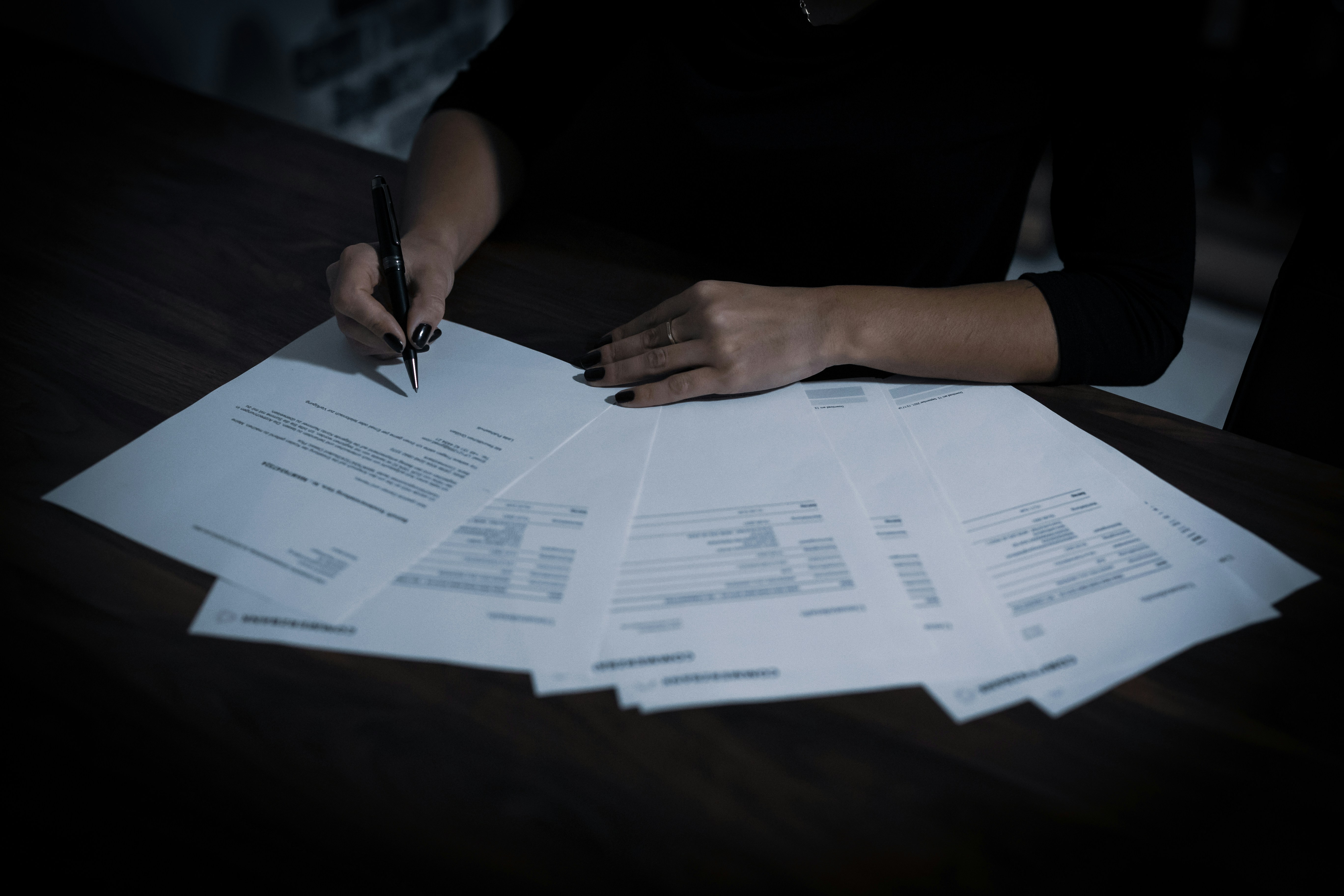Injured? Here’s the Smartest Way to Document Everything for Your Case
To successfully navigate a personal injury claim, document every detail related to the incident. Proper documentation can influence the outcome of your case for the better, and you will receive the compensation you deserve. From gathering evidence at the scene to maintaining records of your medical treatment, each step reinforces your claims.

Understand the legal processes involved in your case. Effective documentation strengthens your position and helps in communicating with legal representatives and insurance companies more efficiently. Thoroughly documenting everything stands as a safeguard against potential discrepancies and strengthens your argument in a court of law. Here’s a comprehensive guide on how to effectively document your injury case.
Gathering Immediate Evidence at the Scene
When an accident happens, your priority should be collecting as much immediate evidence as possible. Start by photographing the scene thoroughly, including your injuries, damaged property, road signs, and environmental conditions. Don’t limit yourself to one or two shots: take multiple angles to establish a clearer view of what occurred. Time-stamped photos can provide even more legitimacy.
If there are witnesses nearby, politely ask for their contact information and, if they’re willing, record a brief summary of what they saw. Jot down notes about the incident while the details are still fresh: how it occurred, your initial injuries, and the other party’s behavior. Try to include relevant conditions that might have caused the accident. Even if something seems minor now, it could become important later. This early documentation sets the stage for a strong and credible personal injury case.
Retaining Legal Representation
Hiring a specialized lawyer in personal injury cases can impact the outcome of your claim. From the start, a qualified attorney will guide you through complex legal processes, protecting your rights and advising you on documentation and timelines. Have you been injured in a Houston motorcycle crash and don’t know how to proceed? Working with a lawyer familiar with local laws and similar case types is always the best idea. They’ll gather evidence, identify expert witnesses, and develop legal strategies tailored to your case on your behalf.
An attorney can handle communications with insurance companies, preventing you from making statements that could be used against you. When you hire a West Virginia personal injury lawyer early (provided that’s where you reside), they can begin documenting everything from witness statements to accident reconstructions when the details are still fresh. Keep them updated with all your records so they can build the strongest possible case.
Documenting Your Injuries
Capturing a comprehensive picture of your physical condition can strengthen your claim. Document your injuries immediately after the accident by taking high-resolution, time-stamped photos. Continue to photograph these injuries over days and weeks to show the healing process or lack thereof. But don’t stop there. Maintain a daily journal detailing your pain levels, mobility issues, sleep disturbances, and emotional impact. Describe how the injuries affect your ability to perform work tasks, enjoy hobbies, or carry out daily responsibilities.
Be honest and specific. Rather than saying “arm hurts,” say, “sharp pain in my right arm while reaching overhead.” Request and retain every medical document: diagnoses, prescriptions, X-rays, test results, and therapy notes. These provide an official, third-party record of your condition. Consistent personal and medical documentation builds a powerful narrative and reinforces your experience, making it difficult for insurers or opposing counsel to minimize your suffering.
Keeping Medical Records Organized
Meticulously organizing your medical documentation is a step that’s overlooked by many but is extremely important. After every medical appointment, collect and file the corresponding documents. These include appointment summaries, test results, prescriptions, invoices, insurance correspondence, and referrals. Label and date each document clearly for easy reference.
Use physical or digital folders to categorize by provider or treatment type. Consider scanning and backing up all physical copies digitally to prevent loss or damage. Use cloud storage, spreadsheets, or document management apps to simplify access and sharing. Every note from your providers can be valuable evidence in court or negotiations. Organized records can help you or your legal counsel spot gaps or inconsistencies in treatment history and address them immediately. Presenting your medical history in a structured and transparent format will improve your case’s credibility and efficiency during legal proceedings.
Witness Statements and Contact Information
Eyewitness testimony offers an unbiased account of events in cases where liability is disputed. As soon as possible after the incident, approach individuals who saw what happened. Politely ask for their names, phone numbers, and email addresses. If they’re willing, request a brief written or recorded statement while the memory is fresh. These statements should cover what they saw, and heard, and the sequence of events.
Record the time and location of each statement. Always ask their permission before recording. Multiple independent accounts can reinforce your version of the incident, and having this documentation early helps avoid memory loss or unavailability later. Store this information securely and share it with your legal team. Witness credibility can be a deciding factor in settlement discussions or court proceedings. Thorough documentation of witnesses protects you against fabricated or incomplete retellings from the opposing side.
Collecting Vehicle and Accident Reports
If law enforcement responds to the scene, request a copy of the police report, which includes accident diagrams, citations, initial fault assessments, and officer observations. These are powerful, unbiased records that lend authority to your version of events. Don’t overlook the importance of insurance company reports either. Your provider and the other party’s insurer will likely generate internal reports evaluating liability and damage assessments.
Request copies of those documents for your files. If there are any discrepancies between the various reports, flag them and discuss them with your attorney. If a vehicle was involved, collect repair invoices, towing records, and damage estimates. These documents provide a clear picture of the aftermath. File all reports and supporting materials in a secure and easily accessible format. Together, these documents can establish fault and quantify damages.
Engaging with Insurance Companies
Dealing with insurance companies requires caution, accuracy, and thorough record-keeping. From your very first interaction, document everything. Write down the representative’s name, the date, and the content of your discussions. Keep emails, claim numbers, and written correspondences in a centralized location. If you must speak over the phone, follow up with a written summary of the conversation via email.
Be honest but cautious when talking to insurance representatives. Never admit fault or downplay your injuries, even casually. Insurance companies are primarily interested in minimizing payouts. Understand your policy coverage in detail so you can confidently respond to inquiries and evaluate settlement offers. Avoid signing anything without reviewing it thoroughly or consulting your attorney. The insurer might pressure you to settle quickly; doing so may forfeit compensation for future complications. Solid documentation will back your claims and can strengthen your negotiating power.
Calculating Lost Wages and Future Earnings
The most ignored aspect of personal injury claims is the full scope of lost income, both immediate and future. Compile recent pay stubs, tax returns, or bank statements to establish your income before the injury. If you’re self-employed, gather invoices, contracts, or business correspondence showing canceled opportunities or reduced productivity. Document missed work days, reduced hours, or modified duties since the incident occurred. A letter from your employer confirming these absences or changes in your role can serve as powerful evidence.
For long-term or permanent injuries, estimating future losses is your priority. A vocational expert can assess how your injury might affect your ability to work, earn, or advance professionally. This data can be used to project income losses over months or years. Presenting this financial impact accurately is key when negotiating settlements or court awards to receive adequate compensation for all your losses.
Utilizing Expert Testimonials
Expert witnesses can elevate the credibility and effectiveness of your case documentation. Medical professionals can explain your injuries in layman’s terms, clarify treatment plans, and assess long-term effects, making complex conditions more understandable to judges or juries. They can rebut claims made by the opposing side’s experts. Make sure you collect and present their credentials, including licenses, board certifications, and publications.
Economic or vocational experts can provide insights into how your injury impacts your current and future earning capacity. Accident reconstruction specialists may recreate the incident to demonstrate the fault more clearly. Expert testimony can bridge gaps in understanding and support claims for non-economic damages like emotional distress. Make it a priority to document all expert reports, communication, and court-ready statements. Keeping a consistent and organized record of their input guarantees that their testimony aligns with your broader case narrative and reinforces your claim’s validity.
Staying Consistent with Documentation
Consistency is the thread that ties your documentation together and lends it power in legal contexts. Aim to maintain regular updates in all areas: injuries, treatments, expenses, and communications. A simple way to stay on track is to maintain a master timeline or spreadsheet where every significant event, document, and interaction is logged chronologically. Every detail should contribute to the credibility of your claim. Set recurring reminders to update your records weekly or after medical appointments. Double-check that dates, facts, and descriptions are consistent across your documentation, medical records, and witness accounts.
Discrepancies (even minor ones) can be used against you. Keep backups and store your documents in more than one location. Be methodical in your documentation so that nothing falls through the cracks and position yourself for the strongest outcome possible.
Documenting your injury case requires diligence, attention to detail, and thoughtful organization. Each step, from gathering initial evidence to calculating future earnings, contributes to the strength of your case. With the right approach, you can navigate the complexities of a personal injury claim effectively.



